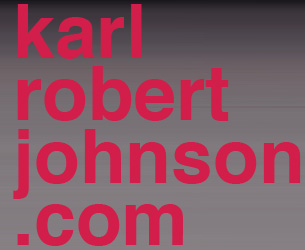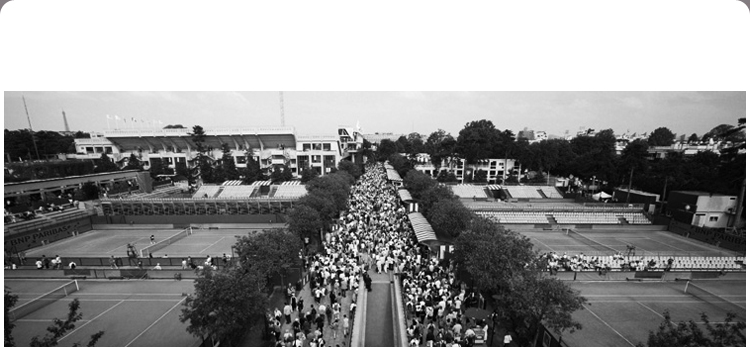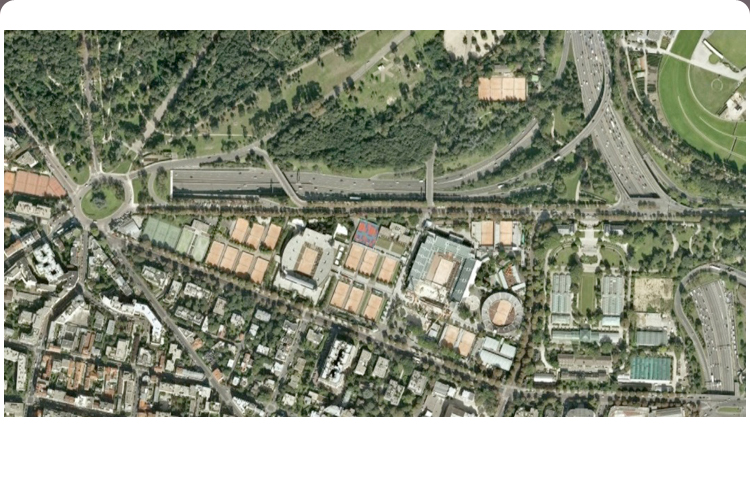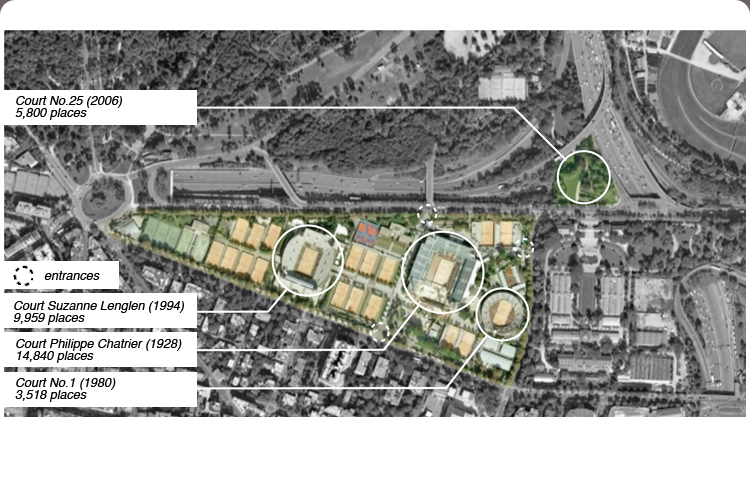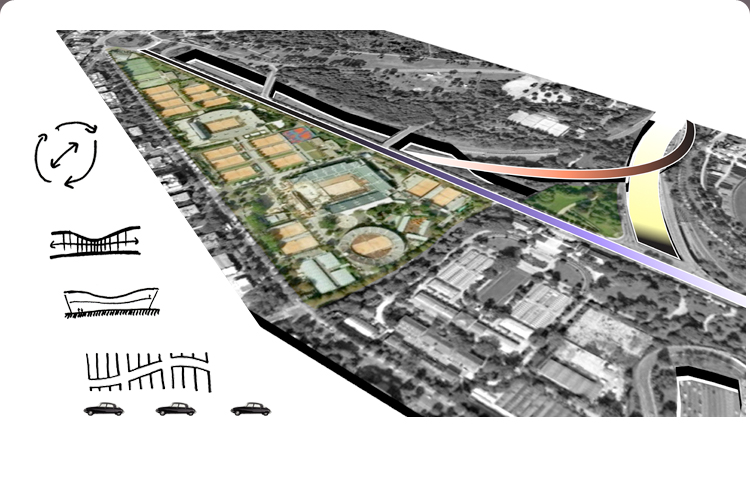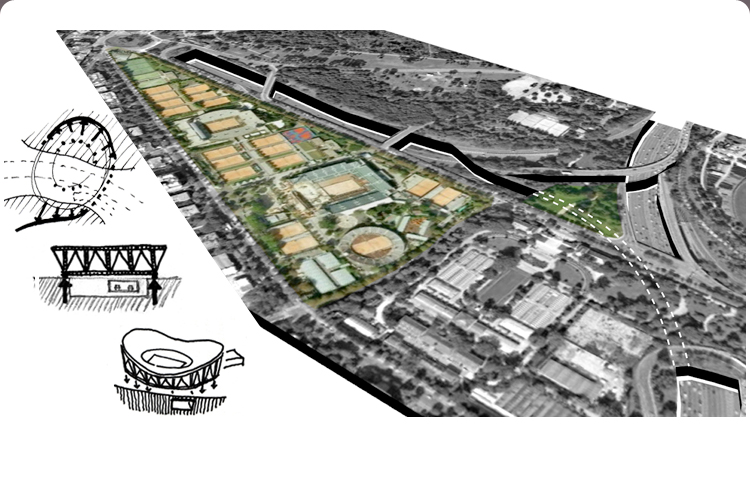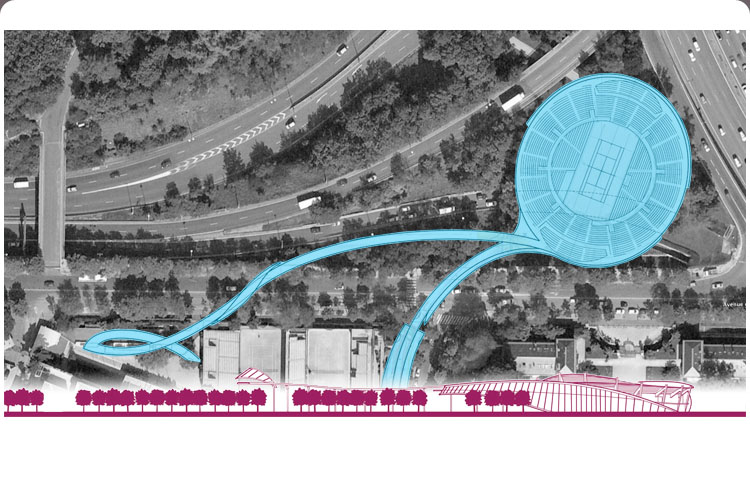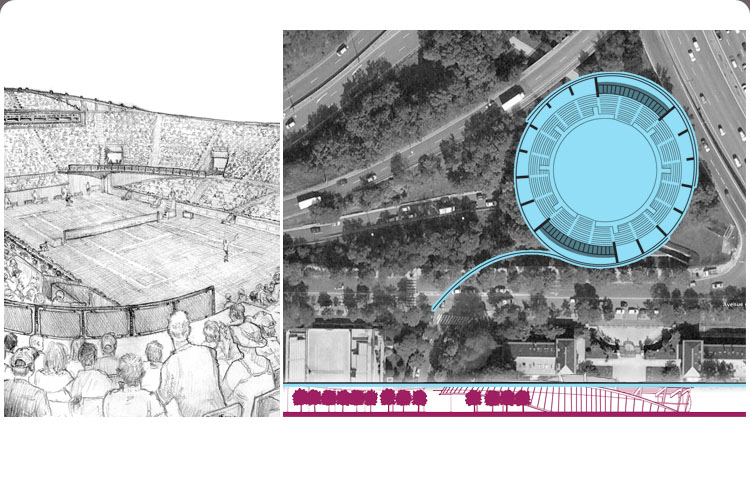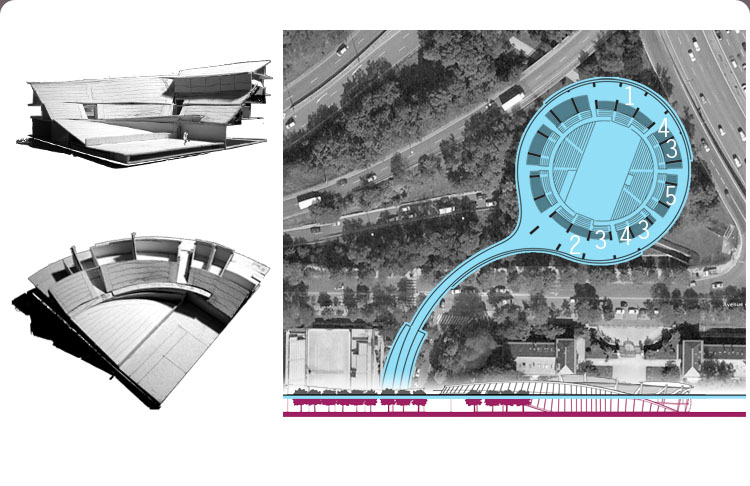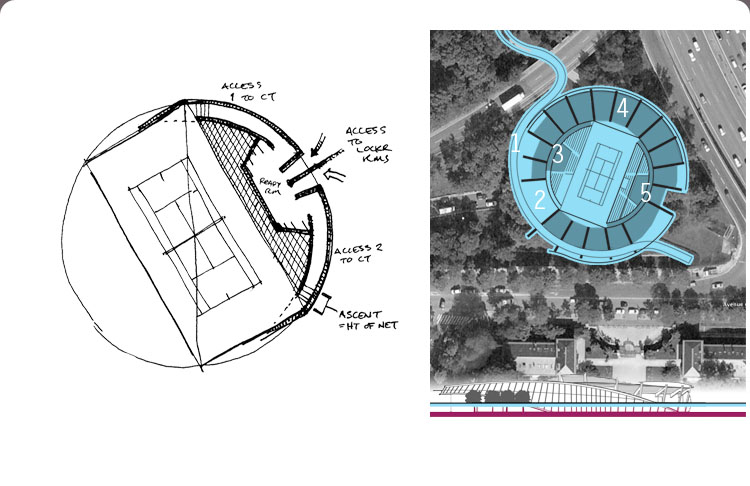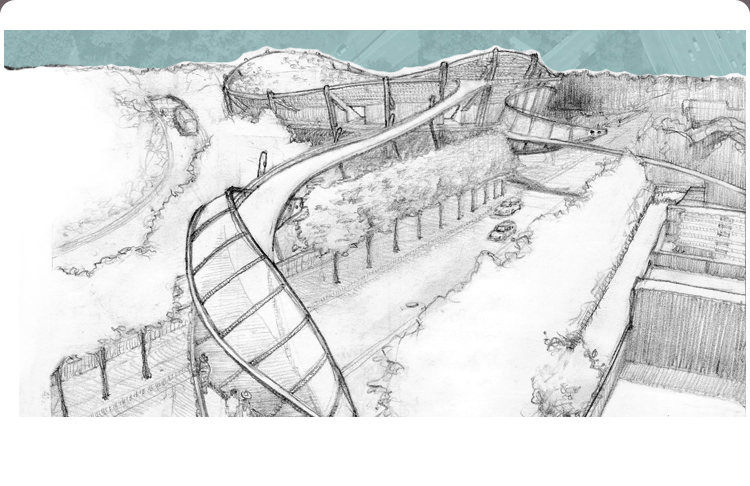“What could have introduced even more controversy to the Roland Garros quagmire-the fact that the FFT would have to plan another stadium within the decade-has been eclipsed by what is considered among city officials as the project’s ‘manifold municipal service’ and, most probably, the effortless grace through which it accomplishes these ends.”
With increasing pressure to expand, French Open host Roland Garros challenges its urban confinement to build a fourth major stadium.
The nearest open site is on a piece of land at the confluence of the A-6 Autoroute and the Parisian ring road, the Périphérique. Presently it is a loosely programed entrance to the Bois de Boulogne. The Avenue de la Porte d'Autueil isolates the site from the rest of Roland Garros.
The stadium is challenged to mediate the forces acting around and within it-the rotational velocity of undending traffic and oblivious drivers versus the focused interplay of opposing atheletes and their spectators.
An autoroute interchange coursing beneath the site threatens any intention of a straightforward structural design. A truss can draw the load away from the underground passage.
The stadium must extend the Roland Garros experience to the island site. This can be done through a deliberate route directing patrons from the center of the original complex to their seats, through the amenities of the stadium and back to the complex when the match concludes. This composition must also account for quick spectator changes between matches.
Two footbridges coordinate this activity: crowds take one bridge from the Court Philippe Chatrier to the top of the stadium, unveiled to them from behind a section of raised grandstands. Patrons can circle the top and descend as they reach their section. At the match's end, they exit through gates to the promenade level and lower bridge crossing to an extremity of the complex.
Members of the press access the press boxes via mezzanines suspended above the promenade. From the stands, one can detect the Bernouli warpage seeping into the bowl of the stadium. The gates sink and rise upon parenthetical walkways, affecting a varying enclosure along the promenade. These formal irregularties do not make their way to court level.
The patron promenade is oriented between two hubs: a sitting lounge overlooking the Périphérique and 16th Arrondisement (1) and a standing lounge before the lower footbridge (2). Quadrants beneath the grandstands are assigned to vendors (3), toilets (4), maintenance/storage and information kiosks (5).
The ground level hosts the professional program, Four entrances to the court follow circumferential passages from the corners to detente chambers for referees and ball runners (3) and atheletes (5). Offices (4) occupy the North spaces and groundskeeping the Southwest (2). The stadium's footprint allows for a redirected cycling path (1) to swing beneath the Avenue and into the Bois.
The Garros extension becomes a three-fold gateway: welcoming patrons to the tennis complex, ushering park-goers toward the Bois de Boulogne and greeting travelers to the restless city.
